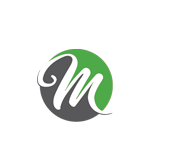Table of Contents
10 Best Productivity Apps for Remote Workers in 2024
Remote work is more popular today than ever before, so productivity tools have become crucial. In 2024, remote workers sought applications that would boost output, smoothen communication with colleagues in other places, and make it easier to handle projects. Good tooling will, therefore, mean that remote teams can blend in smoothly with each other, maintain their productivity, and bring everyone to the same page, regardless of their location. In this article, we will get an insight into some of the productivity applications that make our lives easier when we go remote. We will cover a broad array of areas, from communication and project management to time tracking and file sharing, among many others. By the end of this article, you will have a comprehensive guide through the tools that may aid you in being productive while working from anywhere in the world.
1. Slack
Overview
Slack is a powerful communication tool best for team collaboration. A variety of its features make it ideally suited for the utility of remote workers: organized discussions in channels, direct messages, file sharing, and integration with several different tools and services.
Key Features
- Channels: Specific project channels or topic channels.
- Integrations: Connect seamlessly with Google Drive, Trello, and Zoom.
- Searchable History: Instantly search through past conversations and files.
- Voice and Video Calls: Have meetings directly from the app.
Why It’s Good for Remote Workers
Slack eases communication and organization among remote teams. It is not an isolating experience to work remotely. Its easily navigable interface incorporates a myriad of integrations that make it smooth and effective to collaborate on projects.
2. Trello
10 Best Productivity Apps for Remote Workers in 2024
Overview
Trello is a project management tool that focuses on structuring boards, lists, and cards to help teams visualize tasks and projects more effectively. It’s especially helpful if you’re working with remote teams and have to update many projects simultaneously.
Key Features
- Visual Boards: Create visual boards for various projects and customize lists to your workflow.
- Cards: Represent tasks with cards, and drag and drop them between lists as they move forward.
- Collaboration: Assign a task to a team member and comment on cards for easy communication.
- Power-Ups: Enhance capabilities by using integrations with time tracking, calendar views, and more.
Why It’s Great for Remote Workers
Trello’s visual way of managing projects makes it helpful for global teams to work with clarity and focus. It gives everyone a glance at the status of tasks, simplifying the prioritization of work and helping to meet deadlines.
3. Asana
Overview
Asana is another great tool for project management, which enables a team to plan, organize, and trace work. It offers a variety of views, including lists, boards, and timelines, that best fit the style of project management.
Key Features
- Task Assignments: Clearly outline which team members are responsible for which tasks and by what date.
- Timeline View: Observe project timeline illustrations to manage deadlines.
- Subtasks and Dependencies: Divide big tasks into smaller subtasks and establish dependencies to simplify workflow.
- Reporting: Generate reports to assist in tracking team productivity and project progress.
Why This Is Great for Remote Workers
Asana has a wide array of project management tools, helping remote teams organize their work and clarify reports on project status and individual contributions.
4. Zoom
Overview
Zoom has become a go-to application for remote communication, with the use of videos for conferences, webinars, and virtual meetings carried out by different teams with its reliability and easy-to-use nature.
Key Features
- High-Quality Video and Audio: Minimum network lag allows for clear communication.
- Screen Sharing: Share your screen for effective collaboration during meetings.
- Breakout Rooms: Break large meetings into smaller groups for focused discussions.
- Recording: Document meetings for further reference.
Why It’s Good for Remote Workers
Zoom helps people keep in touch, vital for remote teams to maintain face-to-face communication, which supports developing relations and collaboration. The operation is seamless, offering many features for business convenience during virtual meetings.
5. Google Workspace
Overview
With Google Workspace, formerly G Suite, comes a set of productivity applications: Google Docs, Sheets, Slides, Drive, and Gmail. It also allows teams to collaborate in real-time on documents, spreadsheets, and presentations.
Key Features
- Real-Time Collaboration: Work on documents simultaneously with colleagues.
- Cloud Storage: Store files safely in Google Drive and retrieve them from anywhere.
- Integrations: Connect with other apps and services to drive bigger workflows.
- Video Conferencing: Schedule virtual meetings with Google Meet directly from Google Calendar.
Why It’s Ideal for Remote Workers
Google Workspace enhances collaboration and communication among remote workers. Being cloud-based, it functions as a virtual office where all important files are accessible, and people can work on them in real-time.
6. Notion
Overview
Notion is the all-in-one workspace app for notes, tasks, wikis, and databases. It has powerful, customizable interfaces for a diversified workflow.
Key Features
- Databases: Generate databases to track operations, projects, and notes.
- Pre-Built Templates: Use templates for project planning and meeting notes.
- Collaboration: Share pages and collaborate with team members.
- Integration: Connect with other tools, such as Slack and Google Drive.
Why It’s Perfect for Remote Workers
The versatility of Notion allows remote workers to modify their workspace to particular needs. With versatile features, teams can keep all information in one place, ensuring smooth operations.
7. Todoist
Overview
Todoist is an easy and powerful task management app ideal for remote workers.
Key Features
- Task Organization: Define and create tasks through projects.
- Due Dates and Reminders: Set deadlines with reminders to stay on track.
- Karma Points: Earn points for completed tasks to gamify productivity.
- Collaboration: Share projects with team members for collaborative task management.
Why It’s Great for Remote Workers
Todoist helps remote workers stay focused, ensuring that they don’t miss important deadlines. Its simplistic interface is user-friendly, even for beginners.
8. Clockify
Overview
Clockify is a time-tracking tool that supports freelance professionals and teams to perform accurate time audits. It is especially beneficial for billing based on time and work.
Key Features
- Timekeeping: Start and stop times to track tasks.
- Reporting: Detailed time usage reports for insights.
- Project Management: Organize tasks and visualize time spent.
- Integrations: Connect with other productivity tools for smooth tracking.
Why It’s Great for Remote Workers
Clockify helps remote workers understand productivity patterns and identify areas for improvement. It allows tracking of time spent on activities for better efficiency.
9. Dropbox
Overview
Dropbox is a cloud storage solution that allows for storing, sharing, and collaborating on files. It’s indispensable for employees, particularly remote ones, who need a reliable way to store documents and media.
Key Features
- File Sharing: Effortlessly share files or folders among team members and clients.
- Collaboration Tools: Work on documents within Dropbox Paper.
- Version History: Recover past versions of files to track changes.
- Cross-Platform Access: Access any file from anywhere with an internet connection.
Why It’s Awesome for Remote Workers
Dropbox provides a secure way for teams to store and share files remotely. Its collaboration features make it easy for teams to work together on documents, ensuring access to the most recent versions.
10. Miro
Overview
Miro is the definition of online collaboration, helping teams draw ideas on the same board through planning and sketching possibilities from a distance. It works best with creative teams and project planning.
Key Features
- Infinite Canvas: Create illustrations, flowcharts, or mind maps using an infinite canvas.
- Templates: Access templates for design thinking and agile workflows.
- Collaboration: Invite team members to collaborate in real-time with comments and feedback.
- Integrations: Integrate with tools such as Slack, Google Drive, and Trello.
Why It’s Good for Remote Workers
Miro enhances creativity and collaboration among remote teams. Its visual approach to brainstorming and project planning encourages contributions from all team members.
Conclusion
As of 2024, working from home has reached its peak, and productivity apps are on the rise. This article covers the importance and usability of different tools—Slack, Trello, Asana, Zoom, Google Workspace, Notion, Todoist, Clockify, Dropbox, and Miro—that will help enhance productivity. These apps streamline workflows and improve collaboration with your team. The right combination of tools will depend on your specific needs and preferences, but the options provided here are a great starting point for any remote worker looking to boost productivity.
Frequently Asked Questions (FAQs)
What’s a productivity app?
Productivity apps are designed for personal and team-based purposes to organize and arrange time, tasks, and projects more effectively.
How Can Productivity Apps Help Remote Workers?
These applications facilitate communication, project management, task organization, and efficient collaboration, making it easy for remote workers to coordinate with colleagues.
Are there free productivity applications?
Most productivity apps offer free versions with essential features, while some have premium subscriptions for advanced functionality.
How do I choose the right productivity app for my team?
Consider your team’s particular needs, workflows, and communication styles, then assess features, user interface, and integrations.
Can I use multiple productivity applications simultaneously?
Absolutely! You can combine different productivity apps for communication, project management, and time tracking.
What are the benefits of using project management tools?
Project management tools enable teams to track processes, delegate tasks, set deadlines, and enhance collaboration, leading to smoother workflows and successful project completion.
Are video conferencing tools necessary for remote work?
While not strictly necessary, video conferencing tools enhance communication and foster relationships during virtual meetings.
How can I ensure my team adopts these productivity apps?
Implement training, support, and guidance on the value of the tools, and encourage team members to explore features that fit their work style.
What should I do if I experience trouble with one of my productivity apps?
Most productivity apps have support resources like help centers and FAQs to assist with troubleshooting.
Can productivity apps help with time management?
Many productivity apps include time-tracking features, which are useful for understanding how much time is spent on projects and improving efficiency.
Do productivity apps work for freelancers?
Absolutely! Freelancers can effectively use productivity apps to manage client projects, track time, and organize their work.
What considerations are important for selecting a communication tool?
Look for ease of use, integration with other tools, file-sharing support, and organized discussion channels.
How can I improve collaboration in teams with productivity applications?
Utilize apps with real-time editing, commenting, and task assignment features to encourage teamwork and shared ideas.
Are there mobile versions of these productivity apps?
Most productivity apps have mobile or responsive versions, allowing users to stay productive on the go.
Do productivity apps reduce stress for remote workers?
Yes, these apps help manage workloads and bring organization, potentially reducing stress and improving work-life balance.
How can you ensure your team stays accountable with productivity applications?
Use task assignment, due dates, and progress-tracking features to keep team members accountable.
What role does feedback play in productivity apps?
Feedback features, such as commenting and rating, facilitate communication and help teams assess work quality.
How can I integrate my productivity applications with other tools?
Most productivity apps offer integration options; check the settings or documentation for connection instructions.
Do productivity apps keep your data secure?
Many leading productivity apps have security features like encryption and two-factor authentication, but always review the app’s security policies.
How can I measure the effectiveness of productivity applications?
Track metrics such as project completion rates saved time, and team engagement to evaluate the impact of productivity apps on your workflow and efficiency.
 Today News, Tech, Business, Digital Business etc Michapo.com
Today News, Tech, Business, Digital Business etc Michapo.com

